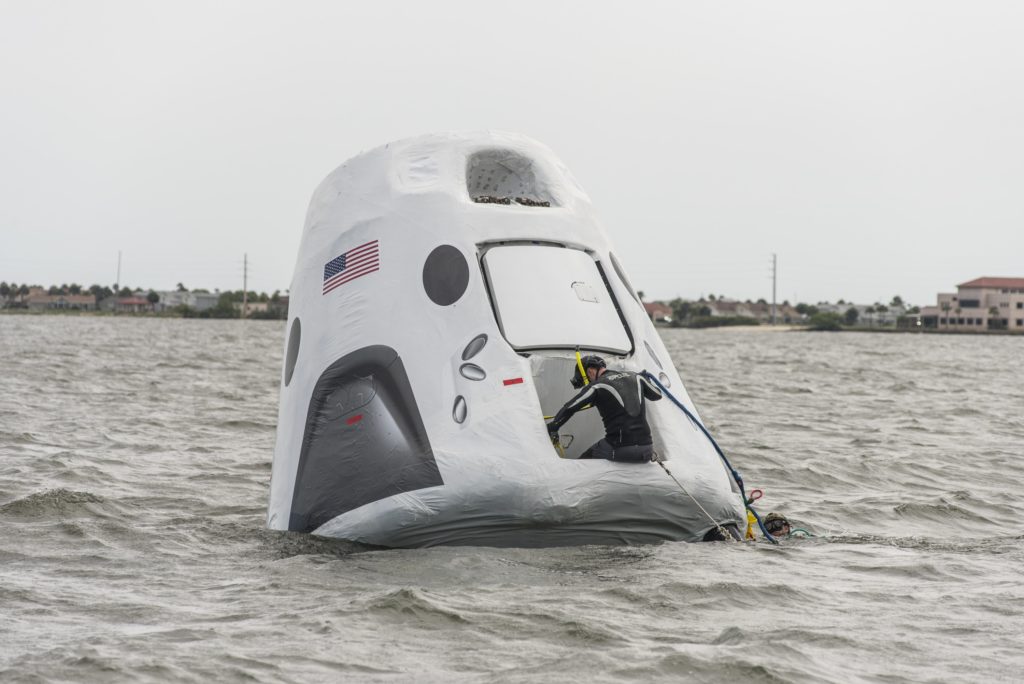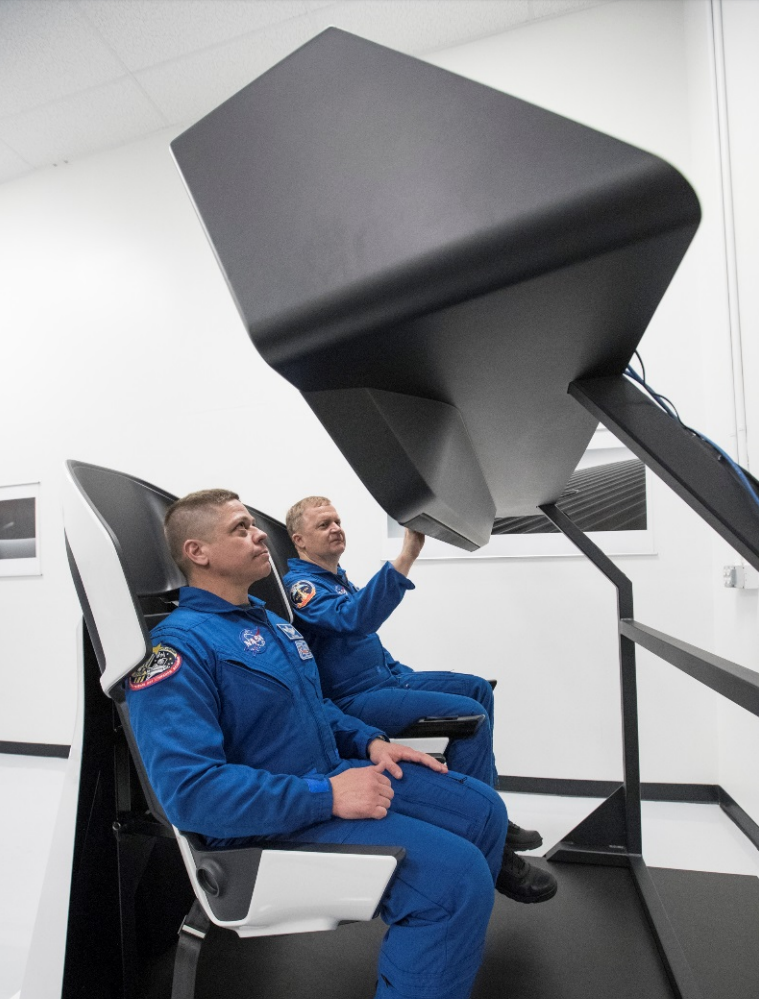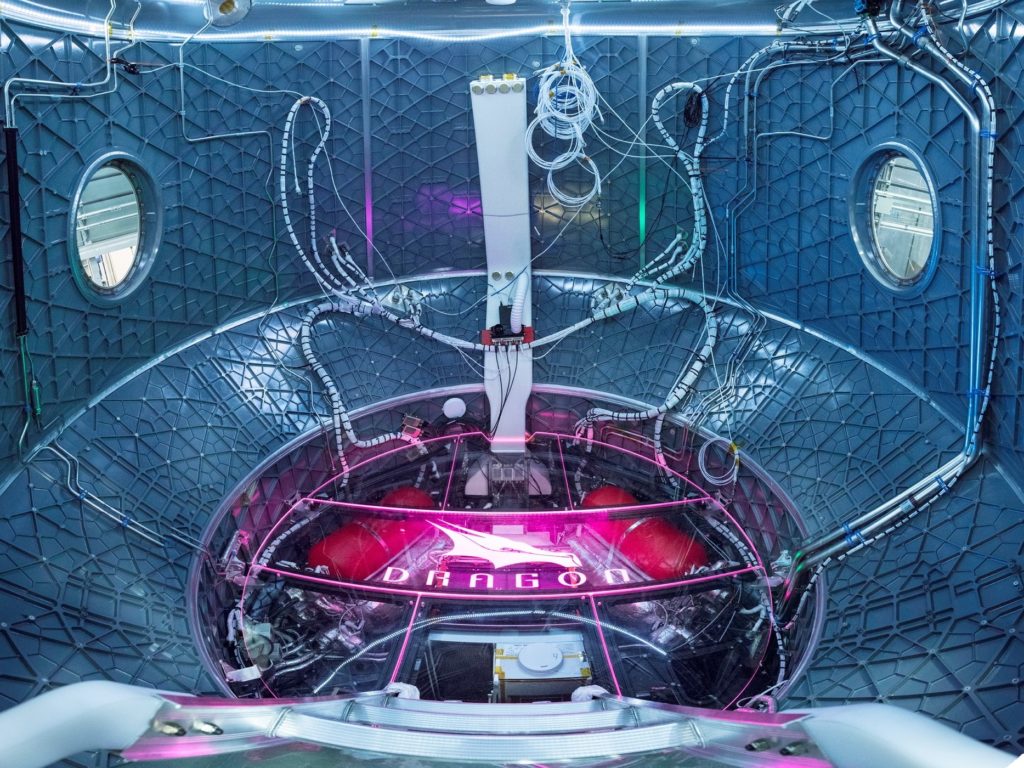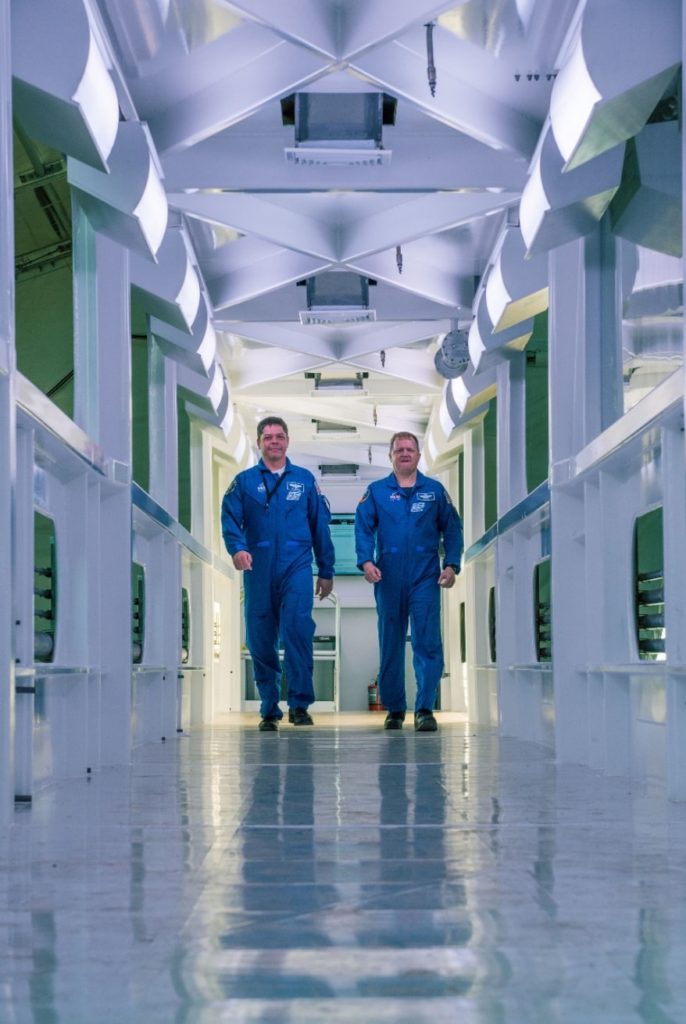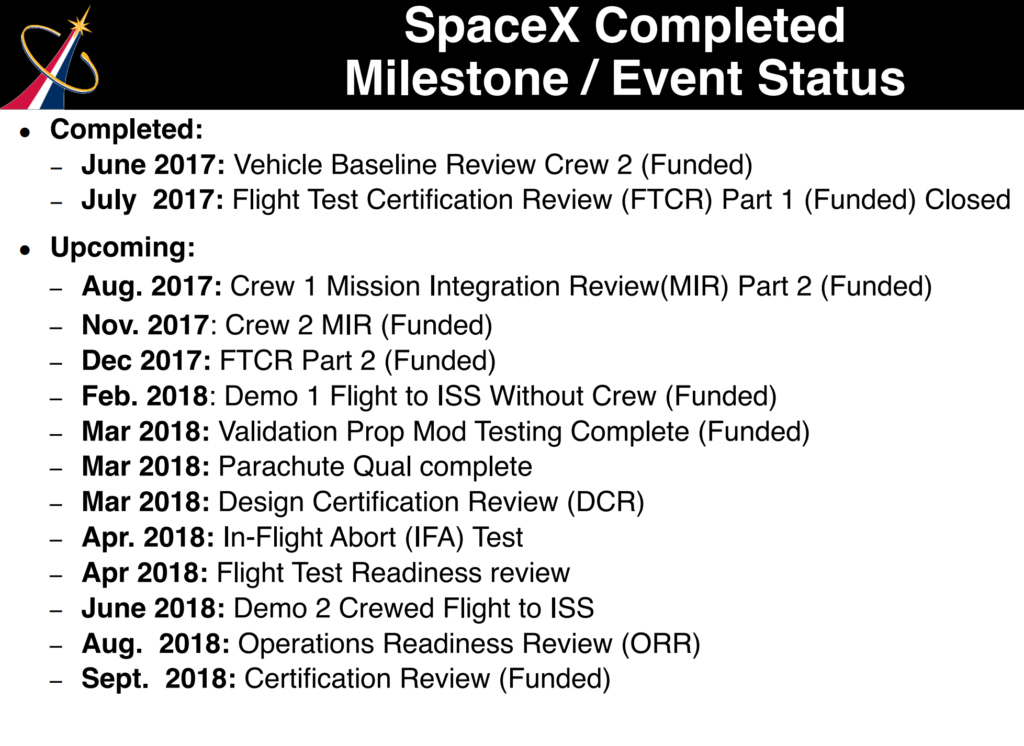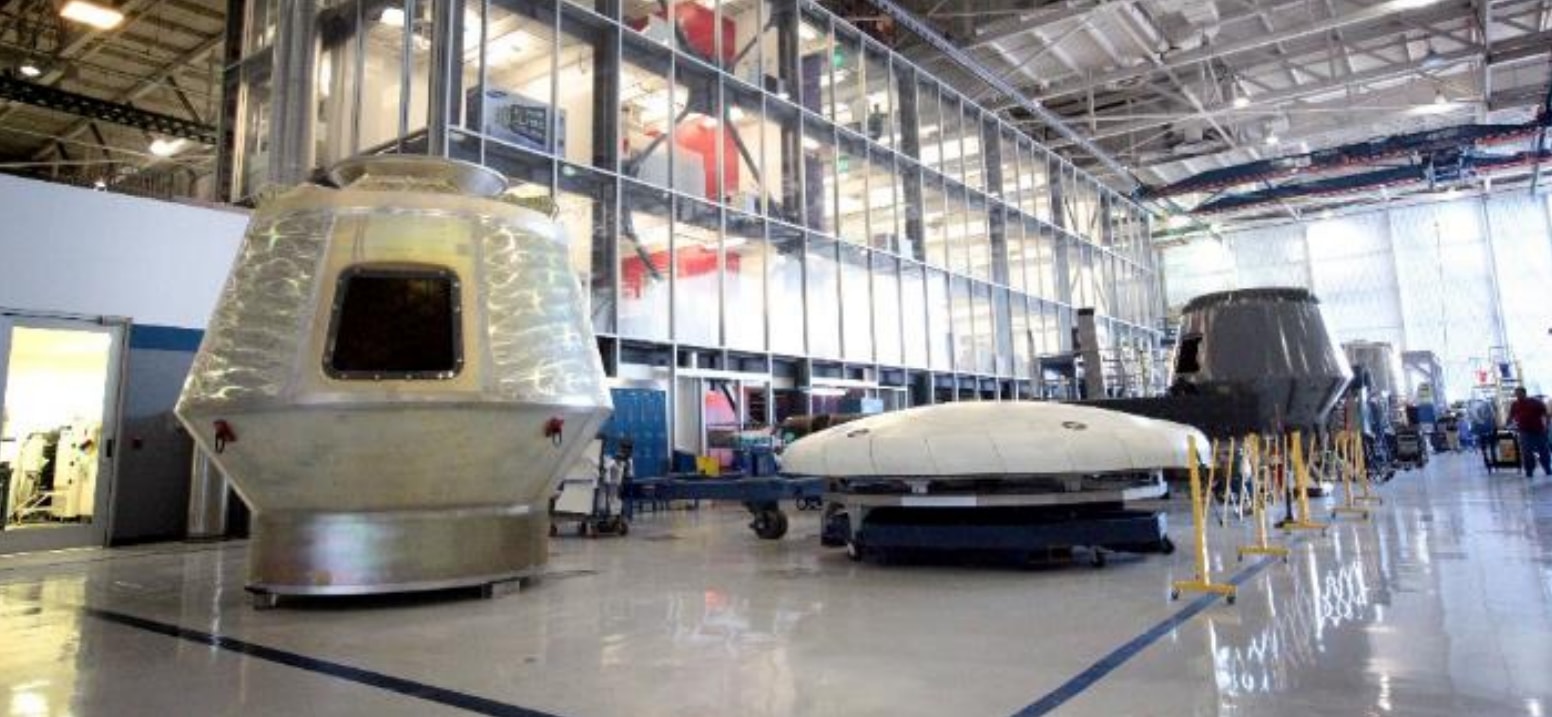
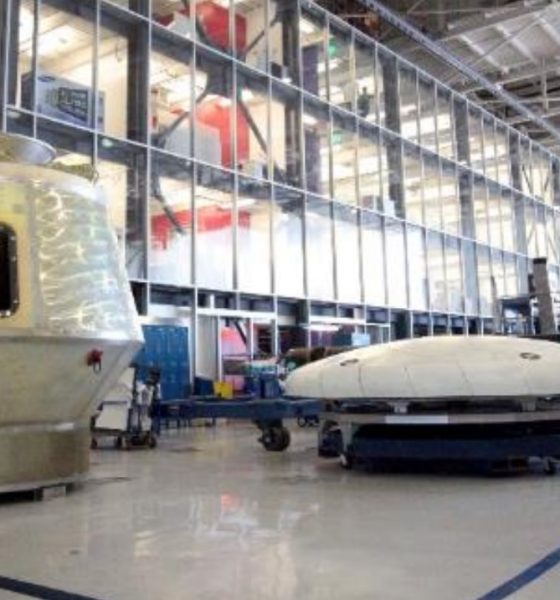
News
SpaceX’s first crewed NASA launches remain on schedule for 2018
Plenty of work lies ahead of both companies, but progress abounds
Amidst a seemingly relaxed July for SpaceX, the company has been working intently with NASA to prepare for its first Commercial Crew mission in as few as seven months. NASA’s combination of strict technical requirements and partial flexibility with the famously fast-moving aerospace company have resulted in a collaborative environment that Elon Musk recently deemed beneficial to the company.
As NASA works with the company to ensure that Dragon 2 is as safe as realistically possible, SpaceX has begun several rounds of advanced testing and training. NASA astronauts are in the process of learning how to operate Dragon 2, and a near-production version of the vehicle’s control software and hardware has been integrated to allow for accurate simulations as practice. Meanwhile, Department of Defense personnel that will be tasked with recovering Dragons and crew from the ocean have begun developing those procedures with a mockup capsule.
- DoD personnel began initial recovery procedure development in July. (SpaceX)
- NASA astronauts utilizing the Dragon 2 simulator as they practice for the first crewed launch in June 2018. (SpaceX)
- A look inside Crew Dragon’s bare crew compartment. (SpaceX)
At SpaceX’s Hawthorne manufacturing facilities, four separate Crew Dragons are in different states of assembly. While one of those vehicles is intended solely for qualification testing, the three remaining Dragons will respectively launch into low Earth orbit throughout the course of 2018, assuming schedules remain firm. Structural testing and verification of the qualification Dragon was completed as of July 24th, and the first flightworthy Dragon has undergone testing of its pressure vessel to ensure that there are no leaks.
Looking forward to launching @NASA astronauts to the International Space Station next year!https://t.co/qoLtTEP4L8
— Elon Musk (@elonmusk) August 3, 2017
Deemed Demo-1 in relation to the first flight of Dragon being Demonstration Flight 1, SpaceX workers are almost ready to integrate the service section and pressure vessel compartments. The pressure vessel is better known as the crew compartment, while the service section is where all the necessary flight and life support systems are contained. Dragon’s “claw” – used to grab hold of the ISS upon docking – and engines have also passed qualification tests.

Different parts of the Demo-1 Dragon in Hawthorne. The crew compartment or pressure vessel can be seen on the left, while the heat shield is front and center. A second and possibly third Crew Dragon pressure vessel can be seen in the background. (SpaceX)
Possibly the most exciting of all, SpaceX has conducted the first pressurized tests of its in-house space suits with NASA crew members. While non-insiders have yet to catch a glimpse of the company’s suits, those lucky enough to have stolen a glance have indicated that they look awesome. As the company progresses to actual vacuum testing of the suits, fans can likely look forward to a reveal. While we don’t yet have a view of SpaceX suits, the July 24th Commercial Crew update did provide the first public photos of SpaceX’s crew access arm, set to be installed at the LC-39A launch pad later this year.
- NASA astronauts check out SpaceX’s recently-completed crew access arm. (SpaceX)
- Whether or not you can parse NASA’s infamous acronym and jargon-heavy language, it’s clear that SpaceX has a considerable amount of work ahead to make their February 2018 deadline. (NASA)
- For those with extreme willpower, a close study of this graphic provides a good idea of where both SpaceX and Boeing are as they head to first CCP launches. (NASA)
Aside from an array of milestones ahead for the company, the only major tasks yet to be finished are design finalization for Crew Dragon’s seat mechanisms and control displays. SpaceX’s Demonstration 1 and 2 launch dates of February and June 2018 respectively remain steady as of this late-July update. Delays are always possible and even likely, but chances are good that SpaceX will be ready to conduct the first launch of crew to the ISS before the end of next year.

News
Tesla (TSLA) receives “Buy” rating and $551 PT from Canaccord Genuity
He also maintained a “Buy” rating for TSLA stock over the company’s improving long-term outlook, which is driven by autonomy and robotics.

Canaccord Genuity analyst George Gianarikas raised his Tesla (NASDAQ:TSLA) price target from $482 to $551. He also maintained a “Buy” rating for TSLA stock over the company’s improving long-term outlook, which is driven by autonomy and robotics.
The analyst’s updated note
Gianarikas lowered his 4Q25 delivery estimates but pointed to several positive factors in the Tesla story. He noted that EV adoption in emerging markets is gaining pace, and progress in FSD and the Robotaxi rollout in 2026 represent major upside drivers. Further progress in the Optimus program next year could also add more momentum for the electric vehicle maker.
“Overall, yes, 4Q25 delivery expectations are being revised lower. However, the reset in the US EV market is laying the groundwork for a more durable and attractive long-term demand environment.
“At the same time, EV penetration in emerging markets is accelerating, reinforcing Tesla’s potential multi‑year growth runway beyond the US. Global progress in FSD and the anticipated rollout of a larger robotaxi fleet in 2026 are increasingly important components of the Tesla equity story and could provide sentiment tailwinds,” the analyst wrote.
Tesla’s busy 2026
The upcoming year would be a busy one for Tesla, considering the company’s plans and targets. The autonomous two-seat Cybercab has been confirmed to start production sometime in Q2 2026, as per Elon Musk during the 2025 Annual Shareholder Meeting.
Apart from this, Tesla is also expected to unveil the next-generation Roadster on April 1, 2026. Tesla is also expected to start high-volume production of the Tesla Semi in Nevada next year.
Apart from vehicle launches, Tesla has expressed its intentions to significantly ramp the rollout of FSD to several regions worldwide, such as Europe. Plans are also underway to launch more Robotaxi networks in several more key areas across the United States.
News
Waymo sues Santa Monica over order to halt overnight charging sessions
In its complaint, Waymo argued that its self-driving cars’ operations do not constitute a public nuisance, and compliance with the city’s order would cause the company irreparable harm.

Waymo has filed a lawsuit against the City of Santa Monica in Los Angeles County Superior Court, seeking to block an order that requires the company to cease overnight charging at two facilities.
In its complaint, Waymo argued that its self-driving cars’ operations do not constitute a public nuisance, and compliance with the city’s order would cause the company irreparable harm.
Nuisance claims
As noted in a report from the Los Angeles Times, Waymo’s two charging sites at Euclid Street and Broadway have operated for about a year, supporting the company’s growing fleet with round-the-clock activity. Unfortunately, this has also resulted in residents in the area reportedly being unable to sleep due to incessant beeping from self-driving taxis that are moving in and out of the charging stations around the clock.
Frustrated residents have protested against the Waymos by blocking the vehicles’ paths, placing cones, and “stacking” cars to create backups. This has also resulted in multiple calls to the police.
Last month, the city issued an order to Waymo and its charging partner, Voltera, to cease overnight operations at the charging locations, stating that the self-driving vehicles’ activities at night were a public nuisance. A December 15 meeting yielded no agreement on mitigations like software rerouting. Waymo proposed changes, but the city reportedly insisted that nothing would satisfy the irate residents.
“We are disappointed that the City has chosen an adversarial path over a collaborative one. The City’s position has been to insist that no actions taken or proposed by Waymo would satisfy the complaining neighbors and therefore must be deemed insufficient,” a Waymo spokesperson stated.
Waymo pushes back
In its legal complaint, Waymo stated that its “activities at the Broadway Facilities do not constitute a public nuisance.” The company also noted that it “faces imminent and irreparable harm to its operations, employees, and customers” from the city’s order. The suit also stated that the city was fully aware that the Voltera charging sites would be operating around the clock to support Waymo’s self-driving taxis.
The company highlighted over one million trips in Santa Monica since launch, with more than 50,000 rides starting or ending there in November alone. Waymo also criticized the city for adopting a contentious strategy against businesses.
“The City of Santa Monica’s recent actions are inconsistent with its stated goal of attracting investment. At a time when the City faces a serious fiscal crisis, officials are choosing to obstruct properly permitted investment rather than fostering a ‘ready for business’ environment,” Waymo stated.
News
Tesla FSD v14.2.2 is getting rave reviews from drivers
So far, early testers have reported buttery-smooth drives with confident performance, even at night or on twisty roads.

Tesla Full Self-Driving (Supervised) v14.2.2 is receiving positive reviews from owners, with several drivers praising the build’s lack of hesitation during lane changes and its smoother decision-making, among others.
The update, which started rolling out on Monday, also adds features like dynamic arrival pin adjustment. So far, early testers have reported buttery-smooth drives with confident performance, even at night or on twisty roads.
Owners highlight major improvements
Longtime Tesla owner and FSD user @BLKMDL3 shared a detailed 10-hour impression of FSD v14.2.2, noting that the system exhibited “zero lane change hesitation” and “extremely refined” lane choices. He praised Mad Max mode’s performance, stellar parking in locations including ticket dispensers, and impressive canyon runs even in dark conditions.
Fellow FSD user Dan Burkland reported an hour of FSD v14.2.2’s nighttime driving with “zero hesitations” and “buttery smooth” confidence reminiscent of Robotaxi rides in areas such as Austin, Texas. Veteran FSD user Whole Mars Catalog also demonstrated voice navigation via Grok, while Tesla owner Devin Olsen completed a nearly two-hour drive with FSD v14.2.2 in heavy traffic and rain with strong performance.
Closer to unsupervised
FSD has been receiving rave reviews, even from Tesla’s competitors. Xpeng CEO He Xiaopeng, for one, offered fresh praise for FSD v14.2 after visiting Silicon Valley. Following extended test drives of Tesla vehicles running the latest FSD software, He stated that the system has made major strides, reinforcing his view that Tesla’s approach to autonomy is indeed the proper path towards autonomy.
According to He, Tesla’s FSD has evolved from a smooth Level 2 advanced driver assistance system into what he described as a “near-Level 4” experience in terms of capabilities. While acknowledging that areas of improvement are still present, the Xpeng CEO stated that FSD’s current iteration significantly surpasses last year’s capabilities. He also reiterated his belief that Tesla’s strategy of using the same autonomous software and hardware architecture across private vehicles and robotaxis is the right long-term approach, as it would allow users to bypass intermediate autonomy stages and move closer to Level 4 functionality.
